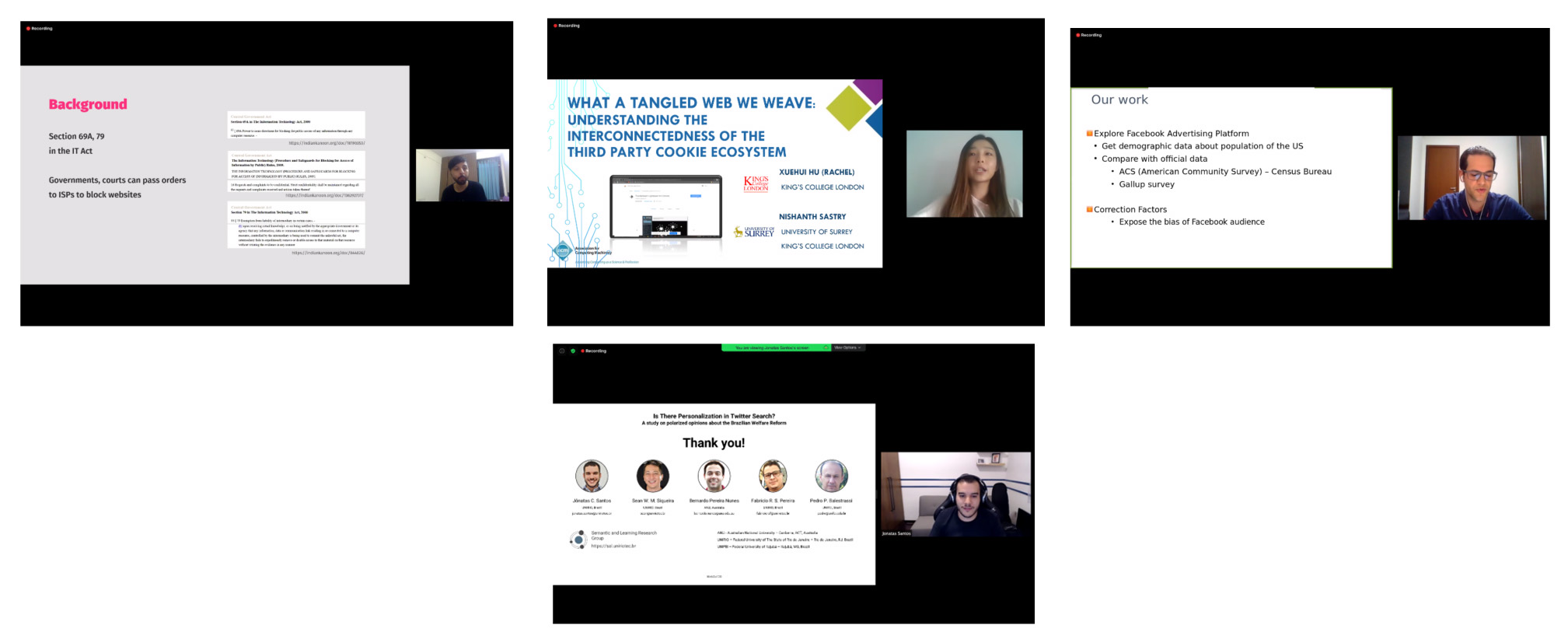#WebSci20 – Day One Paper Sessions by Sofia Kitromili
Posted on behalf of Sofia Kitromili
Paper sessions
The first paper session was evolved around Identity and Privacy and presenters discussed novel work on a lot of cultural perceptions on people’s actions on the web. Examples of work presented: a collection of life situations tweets (travelling, marriage, mental health) from tweets and replies that might otherwise be protected to show how protected accounts may not be as hidden as the users understand by 3rd parties or offenders, a pipeline of looking at the links between users and identifying their validity with examples of terrorism or abusive datasets, and a consensus narrative framework created for books by looking at user reviews on the Good Reads website, and identifying the mentions of characters from the books and the relationship between them.
The second paper session showed work on the Web Infrastructure – Bias, Use, and Manipulation and started with a presentation on how India is censoring their use of the web and how their major ISPs are blocking access to websites. Researchers collected blocked websites and analysed some of their blocking techniques (DNS poisoning or injection, HTTP based censorship and SNI based censorship) and realised that ISPs might be using different blocking methods but may be missing some trusted sites which are probably sending fake IP’s through VPN’s. Next we saw work on the web’s cookie ecosystem and the effect of seeing ads from websites we previously visited in our social media. That is caused by third party trackers that collect leaked cookies from websites and create a container between them and the tracker. Methods for decreasing this, thus maximizing privacy were ad blockers, containers for unconnected categories, and removal of the most common third parties. The final two papers were also related on content personalisation where one discussed that there is a bias on which audience is targeted for ads on Facebook drawing from demographic and official data of the population of the US, and the other saw personalisation algorithms on Twitter specifically a semantic similarity metric to measure personalisation on social media that help people see content.
End note on paper sessions
The first day of the conference started on a strong note about privacy and the web infrastructure with work that was valuably informative on how our actions on the web inform the content we come across and furthermore how those actions may not be as secure as we acknowledge given the mechanics of the social media we use.


